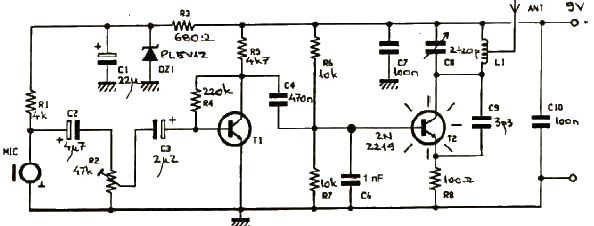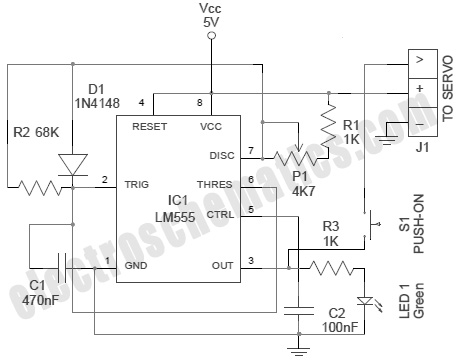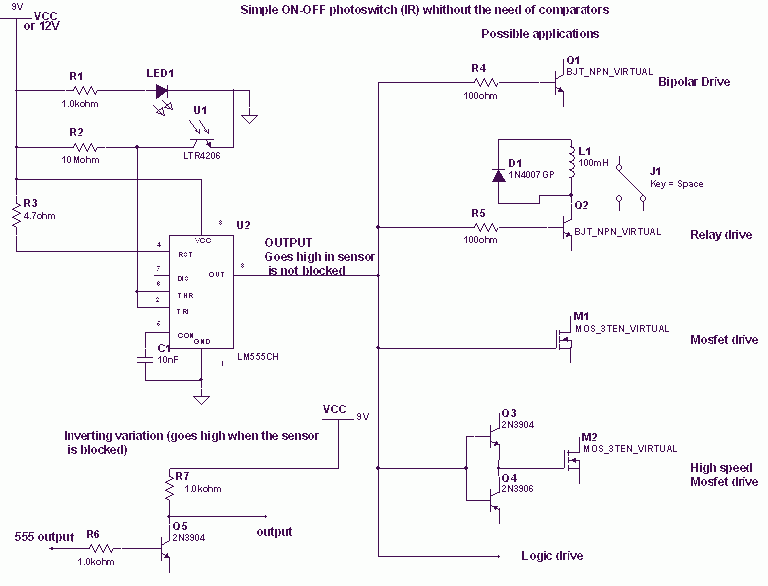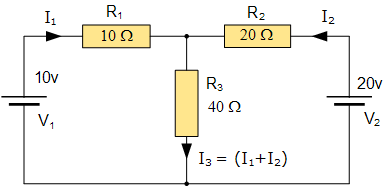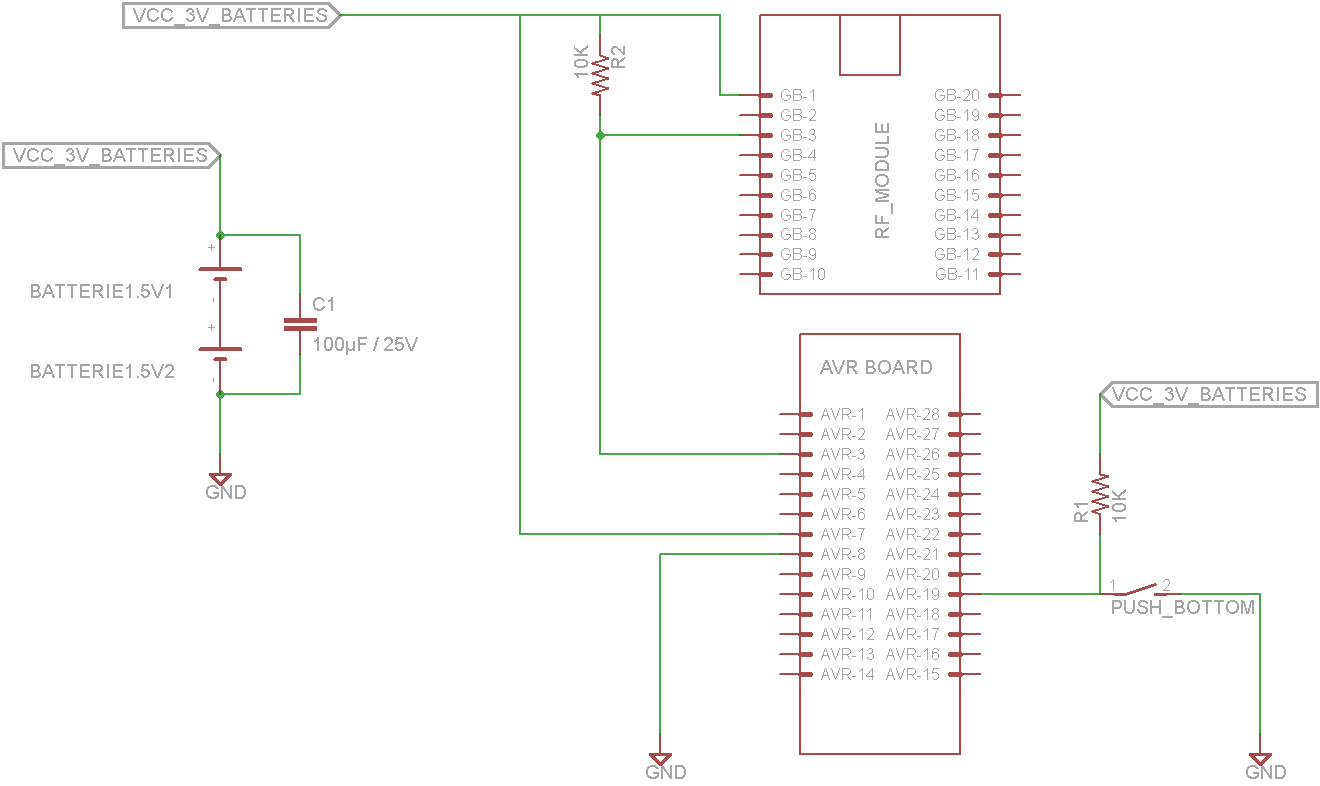
555 (TLC555) Relay Driver Circuit
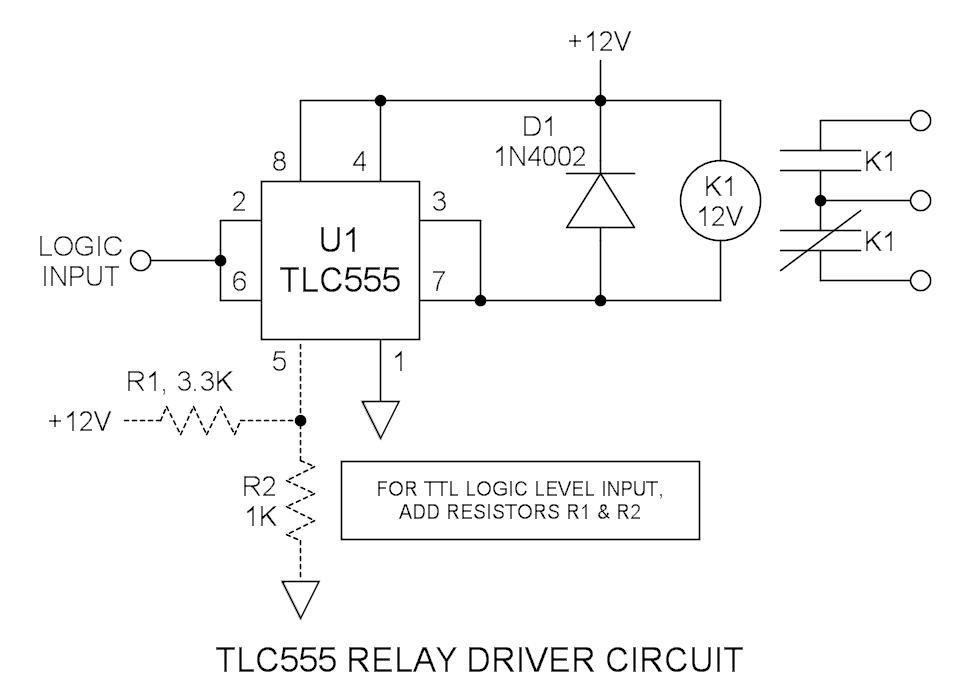
Many integrated circuits possess undocumented features or capabilities. The TLC555 output (pin 3) can sink a load of 100mA down to 1.28V. The open-drain transistor reset (pin 7) can also sink 100mA to 1V. Connecting both lines is permissible since they share the same logical polarity, potentially doubling the sink current capability to 200mA. This feature is suitable for driving a relay coil with a current of 133mA. Although the NE555 has a higher current rating, its saturation voltage is significantly inferior, which poses a disadvantage when driving loads without excessive voltage drop. The TLC555 exhibits characteristics similar to TTL, where its sourcing ability is notably less than its sinking capability. However, for relay operation, the focus is primarily on current sinking properties. A 40A automotive relay (contactor) has been selected for this application. The specific manufacturer or part number is unknown. The distinction between a relay and a contactor is not clearly defined, but it may relate to current rating and application; relays typically handle up to approximately 20A, while anything rated at 40A or higher, or used in power applications, is classified as a contactor. The trigger input (pin 2) and threshold input (pin 6) are connected together, which is a common practice. With a 12V supply, the upper threshold is 8V and the lower threshold is 4V. The significant difference between these two voltage levels creates an effective Schmitt trigger. This configuration can be directly driven by 4000 series CMOS logic, also powered at 12V. To ensure compatibility with TTL logic levels, two resistors can be added as shown in the schematic. This modification reduces the internal divider to a lower voltage, resulting in calculated levels of approximately 1.4V and 2.8V, respectively.
The TLC555 integrated circuit is a versatile timer device that can be configured in various modes, including monostable and astable configurations. In this particular application, the focus is on utilizing the device's output sinking capabilities to control a relay. The TLC555's output pin (pin 3) is designed to handle significant current loads, making it suitable for driving devices such as relays, which require a specific current to activate their coils.
When connecting the output of the TLC555 to a relay, it is crucial to consider the relay's coil resistance and the corresponding current requirements. The selected automotive relay, rated at 40A, is capable of managing larger loads, making it ideal for applications involving motors or high-power devices. The ability to sink 200mA by tying the output and reset pins together enhances the TLC555's effectiveness in this role, ensuring reliable operation without exceeding the current ratings.
The configuration of the trigger (pin 2) and threshold (pin 6) inputs as a Schmitt trigger is a significant feature of this circuit. The wide voltage margin between the upper and lower thresholds (8V and 4V, respectively) provides noise immunity and stable switching characteristics. This is particularly beneficial in environments where voltage fluctuations may occur.
For compatibility with TTL logic levels, the addition of resistors to the circuit allows the TLC555 to interface seamlessly with other digital logic devices. By adjusting the internal voltage divider, the thresholds are lowered to approximately 1.4V and 2.8V, making it suitable for triggering from standard TTL outputs. This adaptability is essential in mixed-logic environments, ensuring that the TLC555 can be integrated into a broader electronic system without compatibility issues.
Overall, the TLC555's features, combined with its capacity to effectively drive a relay, make it a valuable component in various electronic applications, particularly those requiring reliable switching of higher power loads.Many integrated circuits have undocumented features or abilities. This is one of them. The TLC555 output (pin 3) can sink a 100mA load to 1. 28V. The open drain transistor reset (pin 7) can sink 100mA to 1V. Tying both lines together is permissible because they are logically the same polarity and this potentially doubles the sink current ability to 200mA. This is ideal for driving my 133mA relay coil. While it can be seen that the NE555 has the higher current rating, its saturation voltage is grossly inferior and this is a detriment in driving loads without excessive voltage drop. Also it can be seen that the TLC555 is much like TTL in that its sourcing ability is far less than its sinking ability.
However for driving a relay, we are interested only in current sinking properties. This is a 40A automotive relay (contactor) that I selected for this application. Since its coil current exceeds the TLC555 output sink current rating, it is a good candidate. Manufacturer or part number is unknown. What is the difference between a relay and a contactor There is no clear difference other than perhaps current rating and/or application to me, relays are anything from signal devices to approx 20A. Anything rated at 40A or larger, or is used in power applications is a contactor. The trigger input (pin 2) and the threshold input (pin 6) pins are tied together ”this is commonly done.
With a 12V supply, the upper threshold is 8V and the lower is 4V. The two voltage levels, being far apart, make a great Schmitt trigger. This may be driven directly by 4000series CMOS logic that is also powered via 12V. To make it compatible with TTL logic levels, simply add the two resistors that are shown in the schematic. This loads down the internal divider to a lower voltage. The calculated levels are approx. 1. 4 and 2. 8V respectively. 🔗 External reference
The TLC555 integrated circuit is a versatile timer device that can be configured in various modes, including monostable and astable configurations. In this particular application, the focus is on utilizing the device's output sinking capabilities to control a relay. The TLC555's output pin (pin 3) is designed to handle significant current loads, making it suitable for driving devices such as relays, which require a specific current to activate their coils.
When connecting the output of the TLC555 to a relay, it is crucial to consider the relay's coil resistance and the corresponding current requirements. The selected automotive relay, rated at 40A, is capable of managing larger loads, making it ideal for applications involving motors or high-power devices. The ability to sink 200mA by tying the output and reset pins together enhances the TLC555's effectiveness in this role, ensuring reliable operation without exceeding the current ratings.
The configuration of the trigger (pin 2) and threshold (pin 6) inputs as a Schmitt trigger is a significant feature of this circuit. The wide voltage margin between the upper and lower thresholds (8V and 4V, respectively) provides noise immunity and stable switching characteristics. This is particularly beneficial in environments where voltage fluctuations may occur.
For compatibility with TTL logic levels, the addition of resistors to the circuit allows the TLC555 to interface seamlessly with other digital logic devices. By adjusting the internal voltage divider, the thresholds are lowered to approximately 1.4V and 2.8V, making it suitable for triggering from standard TTL outputs. This adaptability is essential in mixed-logic environments, ensuring that the TLC555 can be integrated into a broader electronic system without compatibility issues.
Overall, the TLC555's features, combined with its capacity to effectively drive a relay, make it a valuable component in various electronic applications, particularly those requiring reliable switching of higher power loads.Many integrated circuits have undocumented features or abilities. This is one of them. The TLC555 output (pin 3) can sink a 100mA load to 1. 28V. The open drain transistor reset (pin 7) can sink 100mA to 1V. Tying both lines together is permissible because they are logically the same polarity and this potentially doubles the sink current ability to 200mA. This is ideal for driving my 133mA relay coil. While it can be seen that the NE555 has the higher current rating, its saturation voltage is grossly inferior and this is a detriment in driving loads without excessive voltage drop. Also it can be seen that the TLC555 is much like TTL in that its sourcing ability is far less than its sinking ability.
However for driving a relay, we are interested only in current sinking properties. This is a 40A automotive relay (contactor) that I selected for this application. Since its coil current exceeds the TLC555 output sink current rating, it is a good candidate. Manufacturer or part number is unknown. What is the difference between a relay and a contactor There is no clear difference other than perhaps current rating and/or application to me, relays are anything from signal devices to approx 20A. Anything rated at 40A or larger, or is used in power applications is a contactor. The trigger input (pin 2) and the threshold input (pin 6) pins are tied together ”this is commonly done.
With a 12V supply, the upper threshold is 8V and the lower is 4V. The two voltage levels, being far apart, make a great Schmitt trigger. This may be driven directly by 4000series CMOS logic that is also powered via 12V. To make it compatible with TTL logic levels, simply add the two resistors that are shown in the schematic. This loads down the internal divider to a lower voltage. The calculated levels are approx. 1. 4 and 2. 8V respectively. 🔗 External reference
